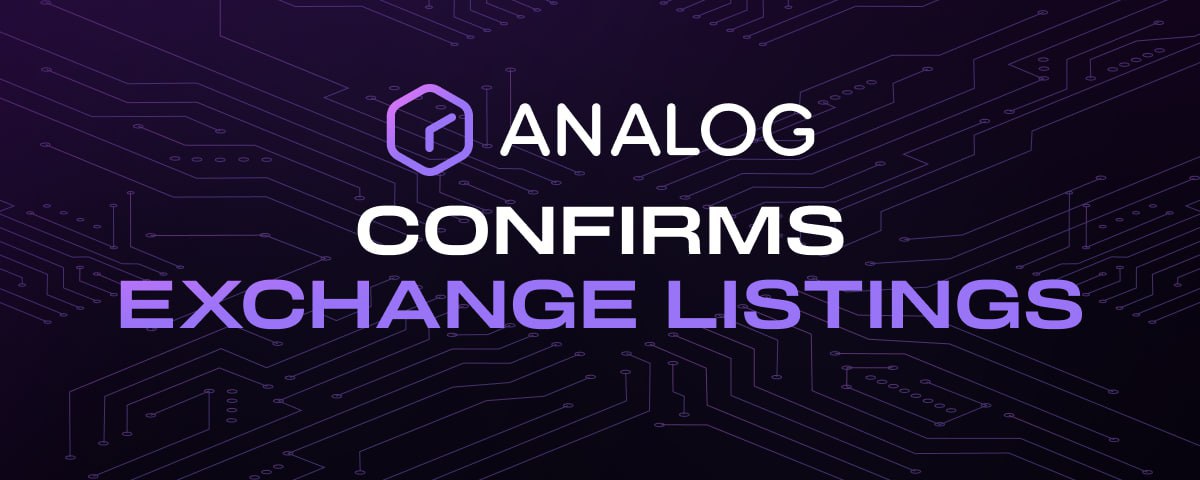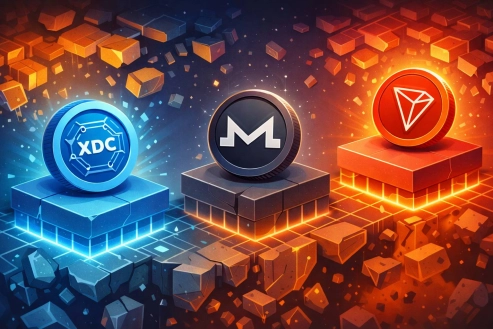$ANLOG Token Celebrates Listings on Several Exchanges as Analog Begins Trading
The much-awaited token launch of the year’s most talked-about interoperability protocol has finally arrived. Staying true to the interoperability ethos embedded in Analog’s technology framework, its native token is now available on various exchanges, allowing users to dive in and explore the excitement firsthand.
With KuCoin, Bitget, MEXC, and Gate.io all set to list $ANLOG on February 10, the prolonged anticipation has come to an end. These tier-one CEX listings will not only enable public sale and airdrop participants to trade their tokens but also provide an opportunity for those who missed these events to acquire $ANLOG, a utility token with numerous functions.
A Single Token for Multiple Networks
Analog’s Layer-0 protocol aims to unite fragmented blockchains, facilitating seamless token and data transfer between them. This goal is achievable through its pioneering Timechain technology and unique Proof-of-Time (PoT) consensus mechanism. PoT employs verifiable delay functions (VDFs) to ensure precise data flow and secure cross-chain operations. Unlike conventional PoS or PoW models, PoT emphasizes cryptographic time guarantees, enhancing the reliability and integrity of cross-chain interactions.
While having a robust consensus mechanism is crucial, it’s useless without active users. Fortunately, Analog has already tackled this challenge, with over 50 projects spanning sectors like AI and gaming being developed on its L0. The technology is being thoroughly tested, and with more than 380,000 participants in its testnet, user engagement is evident. Analog has showcased the capabilities of a truly interoperable protocol by launching Zenswap, a cross-chain DEX that connects liquidity across different networks.
The Role of $ANLOG in the Ecosystem
$ANLOG is integral to Analog’s ecosystem, enabling activities such as staking and governance. The token is essential for securing the Timechain—the decentralized Layer-0 network that facilitates trustless, effortless data and transaction exchanges across blockchains.
Addressing blockchain interoperability remains one of web3’s significant challenges, with a market valued at around $2 billion underscoring its importance. Fragmentation among Layer 1 and Layer 2 chains has created significant hurdles for developers and users, complicating asset movement and transaction execution across chains.
This issue is exacerbated as new networks emerge, further dispersing users and liquidity. Technically, Analog introduces another network, yet as an L0, it belongs to a new class of chains that are not confined to a single master. Its blockchain-agnostic design allows seamless integration with any existing chain, regardless of its architecture.
From decentralized science (DeSci) to AI-driven networks and memecoin communities, Analog is optimistic that its interoperability framework will appeal to diverse projects. With the token now active, it won’t be long before we see if Analog is the interoperability answer the web3 space has been seeking.
Disclaimer: This article is provided for informational purposes only. It is not offered or intended to be used as legal, tax, investment, financial, or other advice.
Investment Disclaimer


















